
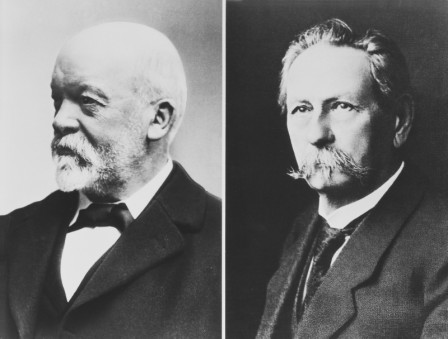
The invention in the 1880s of the high-speed engine and the automobile enabled Gottlieb Daimler and Carl Benz – independently of one another – to lay the foundations for the motorization of road transport. With the help of financial backers and partners, they both invested their private developments in their own enterprises – in Mannheim, Benz founded the firm Benz & Cie. in October 1883, and Daimler-Motoren-Gesellschaft (DMG) was formed in November 1890.
In order to gain publicity and a certain distinction for their products, both companies sought a suitable trademark. To begin with, the inventors used their own names – “Benz” and “Daimler” – which vouched for the origin and quality of the engines and vehicles. The trademark of the Mannheim-based company Benz & Cie. remained unchanged, except that in 1909, the cog wheel symbol which had been used since 1903 was replaced with a laurel wreath surrounding the name Benz. But the turn of the century brought a completely new brand name for products from Daimler-Motoren-Gesellschaft (DMG) in Cannstatt: “Mercedes”. So what is the origin of this name?
The full history and more pictures after the break.
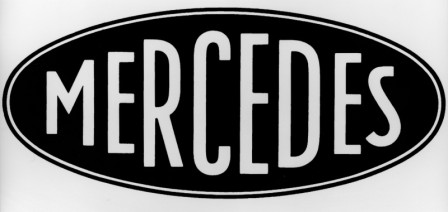
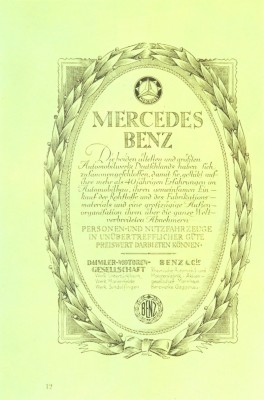

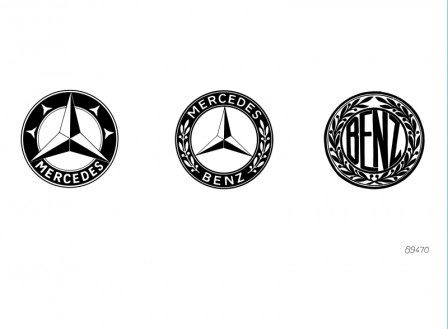

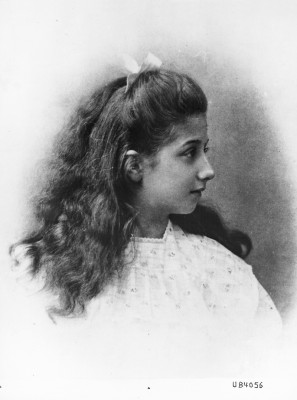
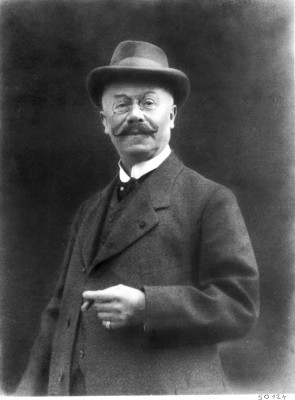
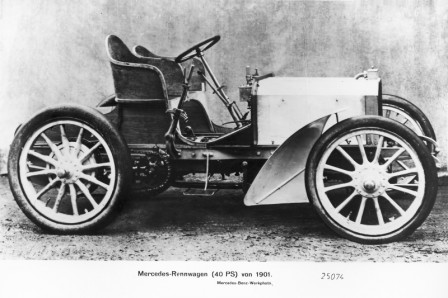
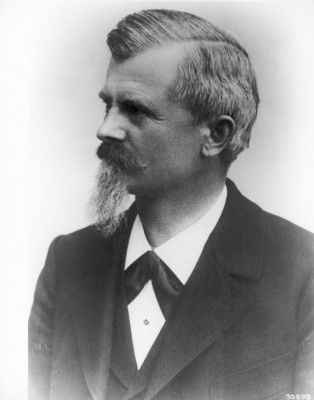
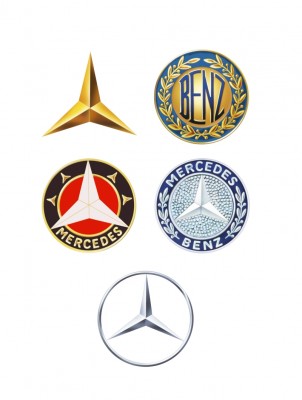
Emil Jellinek becomes involved
Merc©dà¨s – a Spanish girl’s name meaning ‘grace’ – was the name of the daughter born in 1889 to the Austrian businessman, Emil Jellinek, who had homes in Baden near Vienna and Nice.
A progressive thinker with an interest in sport, Jellinek turned his enthusiasm to the dawning age of the automobile, an invention he knew would be of key importance for the future. As early as 1897, he made the journey to Cannstatt to visit the Daimler factory and ordered his first Daimler car – a belt-driven vehicle with a six-hp two-cylinder engine.
But the car, delivered in October 1897 and with a top speed of 24 km/h, was soon too slow for Jellinek. He demanded 40 km/h and ordered two more vehicles. Supplied in September 1898, the two Daimler Phoenix cars with their front-mounted eight-hp engines were the world’s first road vehicles with four-cylinder engines.
Emil Jellinek had good contacts with the worlds of international finance and the aristocracy and became increasingly active as a businessman. In 1898, he began to promote and sell Daimler automobiles, in particular, within the higher echelons of society. In 1899, DMG supplied Jellinek with ten vehicles; in 1900, he received as many as 29.
Jellinek demanded ever faster and more powerful vehicles from DMG. From 1899, he entered these in race meetings – first and foremost of which was the Nice Week – where he would race under his pseudonym Merc©dà¨s – the name of his daughter, ten years old at the time, and a name that was well known in motoring circles. In the early days, the name referred to the team and driver – not to an automotive brand.
At the beginning of April 1900, Jellinek made an agreement with DMG concerning sales of cars and engines and the decision was taken to use the Jellinek’s pseudonym as a product name. In addition, it was agreed that a new engine “bearing the name Daimler-Mercedes” was to be developed. Two weeks later, Jellinek ordered 36 of the vehicles at a total price of 550,000 marks – a sizeable order even by today’s standards: in 2005, this total would have been equivalent to 2.3 million euros. Just a few weeks later, he placed a new order for another 36 vehicles, all with eight-hp engines.
The first Mercedes and the new trade name
The first vehicle to be fitted with the new engine, a 35-hp racing car, was delivered to Jellinek by DMG on December 22, 1900. This first ‘Mercedes’, developed by Wilhelm Maybach, the chief engineer at DMG, caused quite a stir at the beginning of the new century. With its low center of gravity, pressed-steel frame, lightweight high-performance engine and honeycomb radiator, it featured numerous innovations and is regarded today as the first modern automobile.
The Nice Week in March 1901, during which the Mercedes vehicles were found to be unbeatable in virtually every discipline, attracted enormous publicity for Jellinek and the Mercedes. In March and August 1901, the 12/16-hp and 8/11-hp sister models appeared. Jellinek’s orders soon stretched the Daimler plant in Cannstatt to full production capacity.
On June 23, 1902, ‘Merc©dà¨s’ was lodged as the trade name and this was legally registered on September 26. From June 1903, Emil Jellinek obtained permission to call himself Jellinek-Mercedes, commenting that “this is probably the first time a father has taken his daughter’s name.”
The origin of the star
DMG now had a successful brand name, but still lacked a characteristic trademark. Then Paul and Adolf Daimler – the company founder’s two sons, and now senior executives at DMG – remembered that their father, who had died in March 1900 shortly before his 66th birthday, had once used a star as a symbol.
Gottlieb Daimler had been technical director of the Deutz gas engine factory from 1872 until 1881. At the beginning of his employment there, he had marked a star above his own house on a picture postcard of Cologne and Deutz, and had written to his wife that this star would one day shine over his own factory to symbolize prosperity.
The DMG board immediately accepted the proposal and in June 1909, both a three-pointed and a four-pointed star were registered as trademarks. Although both designs were legally protected, only the three-pointed star was used. From 1910 onward, a three-dimensional star adorned the radiator at the front of the car.
The three-pointed star was supposed to symbolize Daimler’s ambition of universal motorization – “on land, on water and in the air”. Over the years, various small additions were made. In 1916, the tips were surrounded by a circle, in which four small stars and the word Mercedes were integrated, or alternatively the names of the DMG plants at Untertürkheim or Berlin-Marienfelde.
In November 1921, DMG applied for legal protection of utility patents for new variations on their trademark and lodged with the patent office a three-dimensional three-pointed star enclosed in a circle – which included the design intended for use on the radiator grille. It became a registered trademark in August 1923.
A star guiding motorists everywhere
The period of inflation after the First World War meant a difficult time for sales – especially of luxury goods such as passenger cars – and had serious repercussions on the automotive industry. Only financially strong companies with well-established brands were able to survive – although even these were frequently forced into mergers and cooperative ventures. It was in this way that the former rivals, DMG and Benz & Cie., formed a syndicate in 1924 in order to standardize design and production, as well as purchasing, sales and advertising, and thereby remain competitive.
During this period, the two companies generally marketed their products jointly, although still under separate trademarks. Two years later, in June 1926, the two oldest motor manufacturers merged to form Daimler-Benz AG.
At this point a new trademark was designed, which brought together the main characteristics of both the existing emblems – the world-renowned three-pointed star belonging to Daimler-Motoren-Gesellschaft was surrounded with its trade name ‘Mercedes’ as well as that of the equally famous name ‘Benz’, whose laurel wreath entwined the two names together.
This trademark, which has changed little over the decades, still adorns Mercedes-Benz vehicles and has come to represent quality and safety on roads everywhere. And throughout the world the name ‘Mercedes-Benz’ is synonymous with tradition, innovation and the future of the automobile.
#history #MercedesBenz #brand #threepointed #star








































































